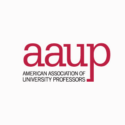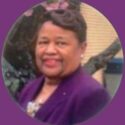![]() For the past 27 years, JBHE has collected Black student admissions data from the highest-ranked liberal arts colleges. Over this long period, there have been 12 years when Amherst College in Massachusetts reported the highest percentage of Black first-year students. On six occasions, Wesleyan University in Middletown, Connecticut, had enrolled the highest percentage of Black first-year students.
For the past 27 years, JBHE has collected Black student admissions data from the highest-ranked liberal arts colleges. Over this long period, there have been 12 years when Amherst College in Massachusetts reported the highest percentage of Black first-year students. On six occasions, Wesleyan University in Middletown, Connecticut, had enrolled the highest percentage of Black first-year students.
Five years ago, there were 87 Black first-year students at Amherst. They made up a whopping 18.2 percent of the first-year class. This was the largest percentage of Black first-year students at any of the high-ranking liberal arts colleges in the history of the JBHE survey. This year, Amherst College once again sits on top of the survey and the college has set a new standard. There are 81 Black students in this year’s entering class. They make up 18.7 percent of the first-year class. This is the largest percentage of Black students in an entering class in the history of our surveys of both high-ranking liberal arts colleges and the nation’s leading research universities.

Mandy Hart, associate dean of admission at Amherst College in Massachusetts, told JBHE that due to the pandemic the college had 52 admitted students who decided to take a “gap year” and delay their enrollment, whereas in a typical year they would have 10 students choose that option. With a smaller overall class size and the exact same number of Black students from a year ago, the percentage of Black students in the class went up. Black students took a gap year at a lower rate than the overall pool of accepted students. Only 3 of the 52 gap year students at Amherst this year identify as Black, according to Hart.
Four years ago, for the first time in the history of our survey, Pomona College in Claremont, California, had the highest percentage of Black students in the entering classes at the nation’s leading liberal arts colleges. There were 65 Black first-year students at Pomona College that year. They made up 15.8 percent of the entering class. Three years ago, Pomona dropped to fourth place with an entering class that was 12.6 percent Black. Two years ago, once again Pomona sat atop our rankings. Pomona had 67 Black first-year students, up from 52 the previous year. Blacks were 16.3 percent of the first-year class. A year ago Pomona dropped to second place, where once again it sits this year. Blacks make up 14.8 percent of the entering class.
Swarthmore College in Pennsylvania ranks third in our survey this year, up from fourth last year, and fifth two years ago. This is the fifth year in a row that Swarthmore has ranked in the top 5 in our survey. Previously, Swarthmore ranked 14th in our survey of leading liberal arts colleges in the percentage of Black students in the entering class. That year, Blacks were just 8.1 percent of the first-year class. There are 54 Black first-year students at the college this year, making up 14.5 percent of the entering class.
Williams College in Massachusetts, which has sat atop our survey in the past, in recent years has declined to report admissions data to JBHE. But public records show that Blacks make up 11 percent of first-year students. This puts Williams in fourth place in our rankings. A year ago, Williams had dropped to near the bottom of the rankings.
Barnard College in New York City has shown great progress over the past several years. This year, Barnard has an entering class that is 10.9 percent Black. This places the women’s college in fifth place in our survey, up seven spots from three years ago.
Macalester College in St. Paul, Minnesota, movie up two places and now ranks sixth in our survey with an entering class 10.8 percent Black
Bowdoin College in Brunswick, Maine, is tied for sixth in this year’s survey with an entering class that is 10.8 percent Black. A year ago, Bowdoin ranked third with a first-year class that was 13 percent Black. In 2018, Bowdoin also ranked third with an entering class that was 13.3 percent Black. Three years ago, Bowdoin ranked second with an entering class that was 14.3 percent Black.
Wellesley College in Massachusetts is the only other leading liberal arts college where Black students are more than 10 percent of the entering class. There are 61 Black students in the entering class at Wellesley this year, making up 10.5 percent of the total.
Wesleyan University, which as stated, has led our rankings on six occasions, ranks ninth in this year’s survey, down from sixth a year ago. Blacks are 9 percent of the first-year class at Wesleyan. Eight years ago when Wesleyan last led the rankings, Blacks were 11.3 percent of the entering class.
In 2009, only three of the nation’s high-ranking liberal arts colleges had entering classes that were at least 10 percent Black. A year ago there were nine. This year, despite the pandemic, there are eight leading liberal arts colleges that have an entering class that is at least 10 percent Black.
A Note on Methodology
Before we continue with the results, it is important to mention how the U.S. Department of Education collects data on the race of undergraduates. Before a change was made several years ago, students who reported more than one race (including African American) were included in the figures for Black students. This is no longer the case. Thus, students who self-identify as biracial or multiracial with some level of African heritage are no longer classified as Black by the Department of Education.
JBHE surveys have always asked respondents to include all students who self-identify as having African American or African heritage including those who are actually from Africa. JBHE has always maintained that biracial, multiracial, and Black students from Africa add to the diversity of a college campus. And including these students in our figures offers college-bound Black students a better idea of what they can expect at a given college or university. In order that we can compare our current data to past JBHE surveys we have continued to ask colleges and universities to include all students who identify themselves as having African American or African heritage.
Some of our responding liberal arts colleges chose to report results that correspond with official Department of Education figures. They are indicated on the main table with an asterisk. It should be noted that if biracial, multiracial, and Black foreign students were included in the Black percentage of students in the first-year classes at these institutions, the overall percentage of Black students would undoubtedly be higher.
Black Student Acceptance Rates
In the past, almost all leading liberal arts colleges divulged data on Black student acceptance rates. In recent years, the number of liberal arts colleges that have refused to divulge the data has grown. The recent litigation involving the admissions practices of Harvard University concerning Asian American students appears to have struck a nerve in higher education circles. Colleges and universities increasingly seem to want to hold their cards close to their vests and not add fuel to efforts to challenge affirmative action admissions policies.
Eight years ago, for the first time in the history of the JBHE survey of liberal arts colleges, more responding colleges had a lower acceptance rate for Black students than their overall acceptance rate compared to the number of colleges that had a Black acceptance rate that was higher than their overall rate. This is the ninth year in a row when more liberal arts colleges that chose to divulge this data showed a lower acceptance rate for Black students than the acceptance rate for students overall. Only three leading liberal arts colleges reported a higher acceptance rate for Black students. They were Bates College, Middlebury College, and Pomona College. In all cases the differences were small.
Twelve leading liberal arts colleges reported lower acceptance rates for Black students than was the case for the entire applicant pool. In some cases, the differences were quite large. For example, at Macalester College in Minnesota, 38.7 percent of all students were accepted but only 22.5 percent of Black students were admitted. At Bucknell University, 37.5 percent of all applicants were accepted but only 21.3 percent of Black applicants were accepted
While no firm conclusions can be made, the fact that for the past nine years there are now more colleges with overall acceptance rates that are higher than Black acceptance rates, causes one to wonder if there has been some curtailment in colleges’ consideration of race in admissions decisions. Or it may be that the colleges that have a much higher acceptance rate for Black students than they do for the applicant pool as a whole, are unwilling to publicize this information in fear of litigation or do not wish to anger some contributing alumni who are not in favor of race-sensitive admissions.
A year ago, Harvey Mudd College accepted only 13.7 percent of all applicants. But the acceptance rate for Black applicants was 35 percent. This year, the college declined to provide JBHE with data on the acceptance rate of Black students.
Student yield is calculated by seeing what percentage of accepted students decided to enroll. Among the leading liberal arts colleges that supplied this information to JBHE, the highest Black student yield was at Barnard College. There, 46.3 percent of accepted Black students decided to enroll. Bowdoin College in Maine had the second-highest Black student yield at 45 percent. Among the institutions reporting yield data, Pomona College and Davidson College were the only other leading liberal arts colleges that had a Black student yield of more than 40 percent.
We also remind viewers that the admissions cycle for the Class of 2024 that began school in the fall of 2020 was far from normal. The global pandemic had a major impact on students’ plans for college, parents’ ability to pay for college, and the willingness of students to be on campus. We also note that we had a lower response rate to our survey than we have had in the past years. In all likelihood, this was due to the pandemic and many college employees working at home without access to traditional communication channels and institutional resources.
In addition to the pandemic, changes in the number of Black students may be due to reporting of data conforming to U.S. Department of Education guidelines rather than the broader view of diversity historically used by JBHE which includes all students who identify as Black including foreign, biracial, and multiracial students. Due to the pandemic, some schools may not have had people on campus to perform the data calculations requested by JBHE.
Keeping all this in mind, we report below the one-year differences in the number of Black students in the entering classes of the leading liberal arts colleges. Eleven colleges reported a gain in the number of Black students and 11 reported a drop. Amherst College had the exact same number of Blacks in its entering class as it did a year ago.
One-Year Gainers and Losers in Black First-Year Enrollments at High-Ranking Liberal Arts Colleges
| School | 2019 | 2020 | % Change |
|---|---|---|---|
| Williams College | 30 | 56 | +86.7 |
| Bryn Mawr College | 14 | 24 | +71.4 |
| Middlebury College | 34 | 56 | +64.7 |
| Wellesley College | 40 | 61 | +52.5 |
| Bucknell University | 32 | 48 | +50.0 |
| Colgate University | 43 | 63 | +46.5 |
| Macalester College | 51 | 58 | +13.7 |
| Barnard College | 71 | 75 | +5.6 |
| Swarthmore College | 52 | 54 | +3.8 |
| Washington & Lee Univ. | 29 | 30 | +3.4 |
| Pomona College | 58 | 59 | +1.7 |
| Amherst College | 81 | 81 | 0.0 |
| Davidson College | 32 | 29 | -9.4 |
| Hamilton College | 28 | 24 | -14.3 |
| Vassar College | 56 | 48 | -14.3 |
| Mount Holyoke College | 44 | 36 | -18.2 |
| Wesleyan University | 87 | 70 | -19.5 |
| Bowdoin College | 65 | 50 | -23.1 |
| Harvey Mudd College | 24 | 18 | -25.0 |
| Bates College | 33 | 23 | -30.3 |
| Claremont McKenna College | 33 | 23 | -30.3 |
| Oberlin College | 65 | 44 | -32.3 |
| Lafayette College | 69 | 26 | -62.3 |
Note: Only colleges that reported data in both 2019 and 2020 are included.
source: JBHE Research Department












I’ve read the story each year of the numbers of Black students accepted and enrolled at highly ranked liberal arts colleges. My son is a graduate of Colorado College and I wonder why this college is not listed.
The college website reports the Class of 2024 as follows:
Chosen from a pool of 10,258 applicants, the Class of 2024 will arrive in mid-August and 690 students will begin their studies this fall.
For the eight consecutive year, more than half of the applicant pool chose to apply either Early Decision (ED) or Early Action (EA). The overall admit rate remained this year at 13.5% and the admit rates by round are as follows: 25% Early Decision I/II; 15% Early Action; 5% Regular Action.
For the seventh year in a row, more than a quarter of the incoming class self-identify as students of color (31%) and eight percent are international students. In the last decade, the population of students of color and international students has increased by more than 60% while 13% of our incoming class are first in their families to attend college.
Why is Trinity College not in this year’s data set? I was curious to see if their progress from last year was an anomaly or shows signs of being sustained for a decent period of time.
They did not respond to multiple requests for the data. This was a strange year with many employees not on campus. Response rates were low.
Hello, I am writing an article for the school newspaper .
I am trying to find out the name of the first Afro American student at Claremont Mc Kenna college. Any help?
Thank you
I just came across this article and I am curious to know, of the colleges with top ranking spots, is there data on what attracted students to enroll? Was it academics, student life, locale or finances? Was it a combination of these things? As someone who has worked in Higher Ed., this has always been an area of concern. Even with recruitment efforts in place, it can often be a challenge to attract students of color, particularly African American students, to enroll, once an acceptance offer has been made.